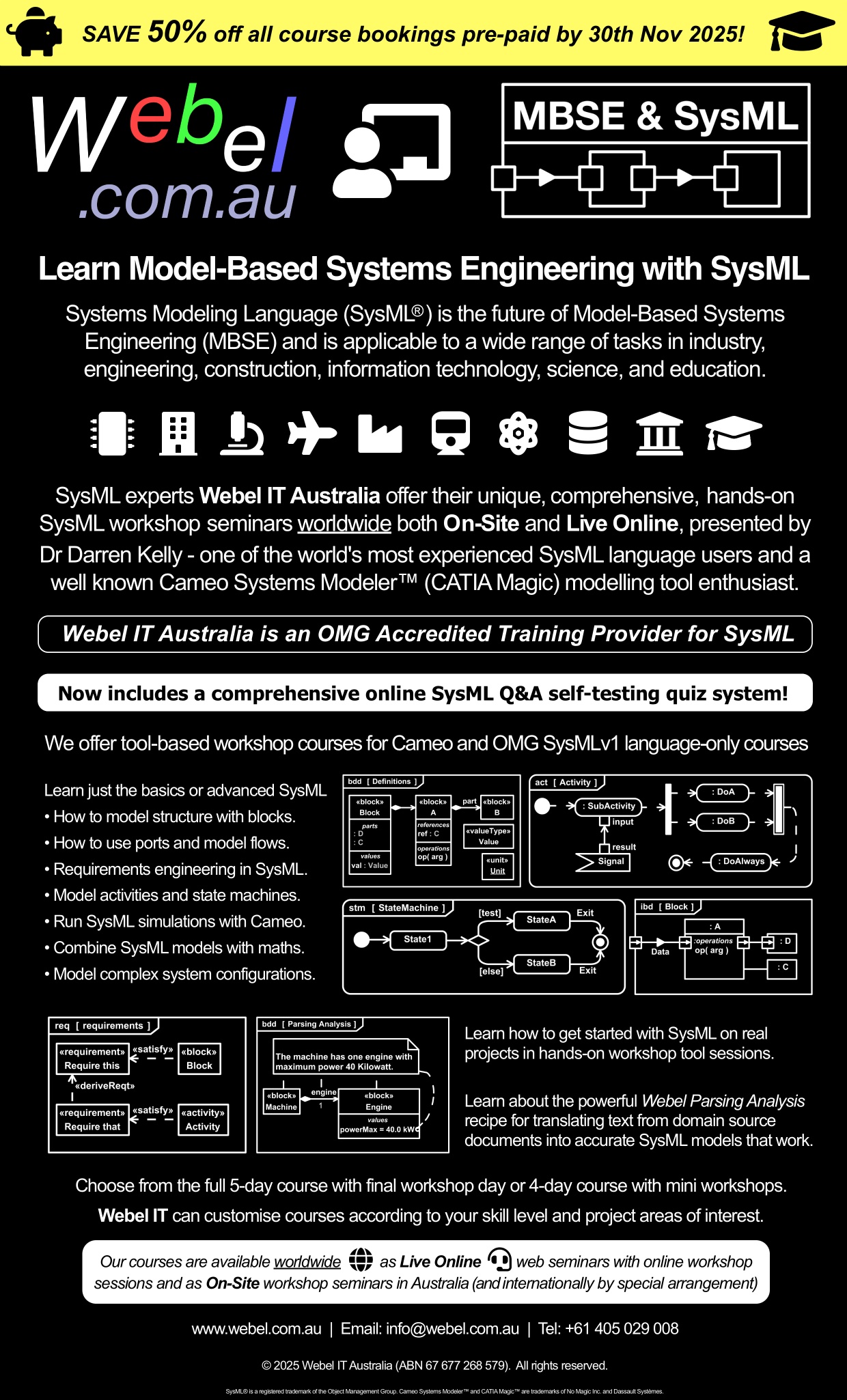Keywords
If you are new to SysML, don't be too concerned about whether your modelling is perfect first up, because the great thing about MBSE tools - especially SysML tools - is they invite incremental improvement, and your fixes flow through all diagrams, thanks to the power of Single Source Of Truth!
Modelling in SysML tools is part Science and part Art. Long term, I'm writing a new book called 'The Art and Science of SysML Modelling', but the online tutorials trails, videos, and examples here on this site will remain the main Webel educational resources for SysML.
Like learning a powerful musical instrument, it takes time mastering the physical dexterity with the hands and becoming completely familiar with the tool features and menus. My big angle on the entire subject is that not enough people emphasise the Art of modelling; the crucial thing is that engineers can get into their engineering zone, and not be mentally distracted by menu items, project organisation, model navigation, and how to organise models and Diagrams, and that's what I emphasise in our hands on workshop course.
Dr Darren says:You can't obtain the optimum benefit of graphical engineering with SysML without becoming mindful of the cognitive and artistic aspects of graphical modelling. Most engineers accept without question that there is practical efficiency in an elegant, beautiful, electronics device design; it is no different, at all, for MBSE with SysML. The "Zen of SysML" matters!
Many of the best modelling strategies are collated at:
These help support and amplify the SysML language, which is really only a set of modelling building blocks for systems engineering, and there are many ways to use them.
While reading SysML books is useful, and there are some good ones, most SysML books do not address the practical modelling enough, and it's also not always the best medium. The Webel tutorial slide trails cross-reference extracts from the SysML and UML specifications (as relatable text "snippet" pages) and through many practical example Diagram slide pages (which also have back links and cross references to other examples and modelling policies). The web page Diagram slide tutorial approach used on this Webel site is mostly a better learning medium.
Our free online SysML starter guide is here:
You can just navigate the annotated Diagram slides like a slideshow, or you can navigate the slide pages, which have more detailed remarks and cross-links. Many of them reference also the Webel Best Practice policy Note pages and features of the MagicDraw/Cameo tools.
The language and tool feature Note pages in turn reference many educational and practical application examples throughout the site. There are many slide tutorial trails and videos demonstrating applications of SysML to realistic and actual real world systems. Some of them are more advanced or address very specific tool issues (especially some of the longer videos), and how to start simulating using Cameo Simulation Toolkit.
My single biggest weapon for getting text from domain documents into SysML models to kick start projects is the Webel Parsing Analysis recipe for SysML, which supplements any other adopted SE methodology. There is an accessible online slide trail for it here:
Best of luck with your modelling! And remember, even though it may feel slow making progress sometimes, your signal-to-noise ratio will be much, much higher with MBSE, so you'll end up getting more done longer term. The ultimate aim is to get fluent enough with the language and tool to get into your engineering zone and focus on your domain tasks, just like an electrical circuit design specialist.
MBSE with SysML really does work, and if anyone doubts it, just send them here! Grand Pianos work really well, you just have to know how to play them.


